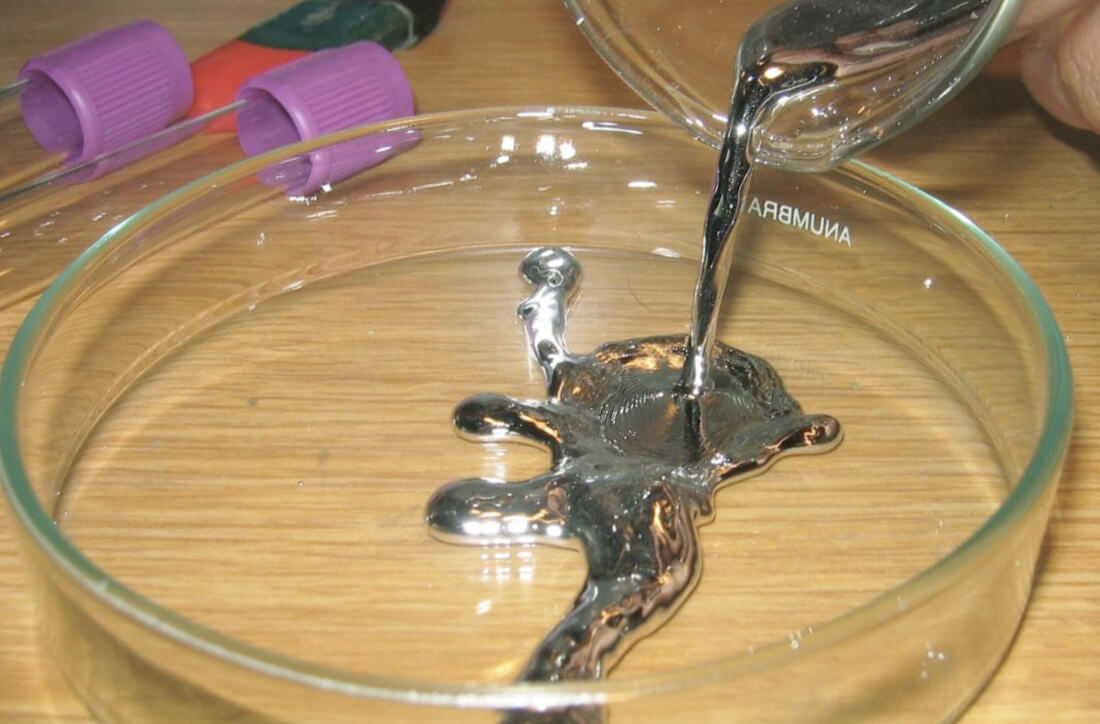
Elemental Mercury
Elemental Mercury, also known as quicksilver, has captivated humanity for centuries with its mysterious properties. However, beneath its shimmering allure lies a silent threat to human health and the environment. Elemental mercury, commonly referred to as liquid mercury or quicksilver, poses significant risks due to its toxic nature. Understanding the dangers associated with mercury exposure is crucial in safeguarding public health and the environment.
The Silent Threat: Understanding Mercury (Hg) Poisoning from Elemental Mercury

Exploring the Properties of Elemental Mercury
Elemental Mercury is a unique element that exists in three primary forms: elemental mercury, inorganic mercury compounds, and organic mercury compounds. Elemental mercury, a shiny, silver-white metal, remains in a liquid state at room temperature, making it distinct from most metals. This characteristic enables it to vaporize easily, forming a colorless, odorless gas.
Sources of Elemental Mercury Exposure
Human exposure to Elemental Mercury can occur through various sources, including industrial processes, natural phenomena, and consumer products. Artisanal and small-scale gold mining, coal combustion, and industrial processes such as chlor-alkali production are major contributors to mercury pollution. Additionally, mercury-containing products like thermometers, fluorescent light bulbs, and dental amalgams pose risks if mishandled or improperly disposed of.
Health Impacts of Mercury Poisoning
Exposure to mercury, particularly elemental mercury vapor, can lead to severe health consequences. Inhalation of Elemental Mercury vapor is the most common route of exposure in occupational settings and can result in respiratory issues, neurological damage, and kidney failure. Chronic exposure to low levels of mercury vapor may cause symptoms such as tremors, memory loss, and irritability, while acute exposure to high levels can be fatal.
Environmental Concerns
Elemental Mercury pollution poses significant threats to the environment, with far-reaching consequences for ecosystems and wildlife. Once released into the environment, mercury can undergo transformations, cycling between air, water, and soil. Microorganisms in aquatic environments can convert mercury into methylmercury, a highly toxic form that bioaccumulates in the food chain. Predatory fish, such as tuna and swordfish, can accumulate high levels of methylmercury, posing risks to human consumers.

Mitigating Mercury Exposure
Efforts to mitigate mercury exposure require a multifaceted approach involving regulatory measures, technological innovations, and public awareness campaigns. International agreements, such as the Minamata Convention on Mercury, aim to reduce mercury emissions and regulate its use worldwide. Additionally, the development of alternative technologies and cleaner production processes can help minimize mercury pollution from industrial sources. Public education and outreach initiatives play a crucial role in raising awareness about the risks of mercury exposure and promoting safer practices in handling Elemental Mercury-containing products.
Mercury, once revered for its mesmerizing properties, now stands as a formidable threat to human health and the environment. The pervasiveness of mercury pollution underscores the urgent need for concerted action to address this global challenge. By understanding the sources, health impacts, and environmental concerns associated with mercury exposure, we can strive towards a safer, healthier future for generations to come.
Exploring the Pros and Cons of Elemental Mercury: Understanding the Benefits and Risks of Elemental Mercury
Mercury, a fascinating element with unique properties, has long been utilized for various purposes across industries and applications. However, alongside its advantages, mercury also presents significant challenges and risks. Delving into the pros and cons of elemental mercury is essential for comprehensively assessing its utility and ensuring the safety of its use.
Advantages of Elemental Mercury
Thermometric Properties: One of the primary advantages of mercury is its exceptional thermal conductivity and expansion characteristics, making it ideal for use in thermometers and thermostats. Its ability to accurately measure temperature variations with precision has made mercury thermometers a standard tool in scientific and industrial settings.

- Electrical Applications: Mercury’s conductive properties have led to its use in electrical switches and relays. Its low electrical resistance and stable conductivity make it valuable in wdbos controlling electrical currents, particularly in high-voltage applications where other materials may degrade over time.
- Industrial Processes: In industrial processes such as chlor-alkali production and gold mining, mercury plays a crucial role in various stages, from catalysis to extraction. Its unique chemical properties enable it to facilitate certain reactions and processes efficiently.
- Dental Amalgams: Mercury-based dental amalgams have been used for decades in restorative dentistry due to their durability and ease of application. Dental amalgams provide a cost-effective solution for filling cavities and restoring tooth structure, contributing to dental health worldwide.
Disadvantages and Risks of Elemental Mercury
- Toxicity: Perhaps the most significant drawback of mercury is its inherent toxicity, particularly in its elemental and organic forms. Exposure to mercury vapor can lead to adverse health effects, including neurological damage, respiratory issues, and kidney dysfunction. Prolonged or high-level exposure poses significant risks to human health and the environment.
- Environmental Pollution: Mercury pollution is a pervasive environmental concern, stemming from industrial activities, waste disposal, and natural sources. Once released into the environment, mercury can accumulate in ecosystems, contaminating waterways and posing risks to aquatic life and wildlife. The conversion of elemental mercury into methylmercury by microorganisms further exacerbates its toxic effects and Bioaccumulation in the food chain.
- Regulatory Restrictions: Recognizing the dangers posed by Elementa, many countries have Implemented Stringent regulations to limit its use and emissions. Restrictions on Mercury-Containing products, such as thermometers and fluorescent bulbs, aim to minimize exposure and prevent environmental contamination. Compliance with these regulations can pose challenges for industries reliant on mercury-based processes and products.
- Health Concerns: Occupational exposure to mercury remains a concern for workers in industries where mercury is used or produced. Proper safety measures, including ventilation systems and personal protective equipment, are essential to mitigate the risks of mercury exposure in the workplace. Additionally, public health campaigns aim to raise awareness about the dangers of mercury and promote safer practices in handling and disposal.
Conclusion Elemental Mercury
While Elemental Mercury offers Undeniable advantages in certain applications, its toxic nature and environmental impact necessitate careful consideration and management. Efforts to minimize mercury exposure and pollution require collaboration among governments, industries, and communities. By weighing the benefits against the risks and Implementing Effective Mitigation strategies, we can harness the utility of Elemental Mercury while Safeguarding human health and the environment for future generations.
Read More Article About “Baba Vanga: The Mysterious Seer of Bulgaria 2024“








